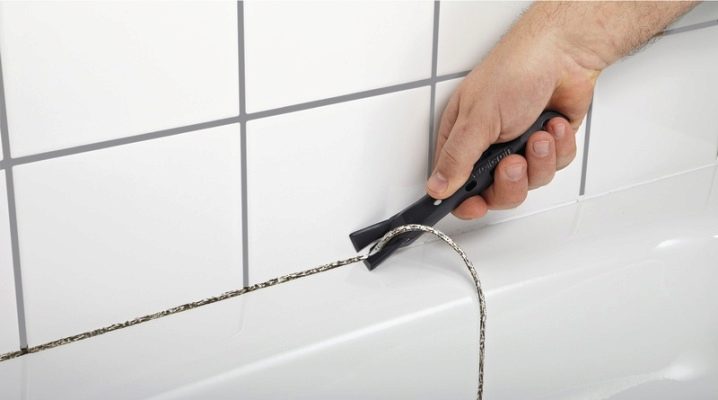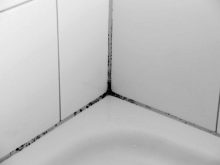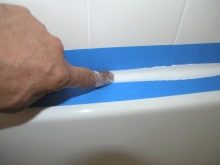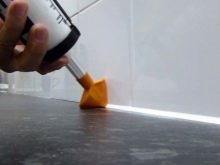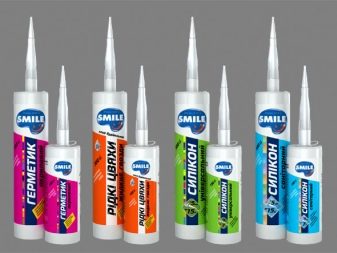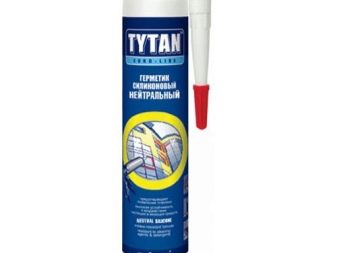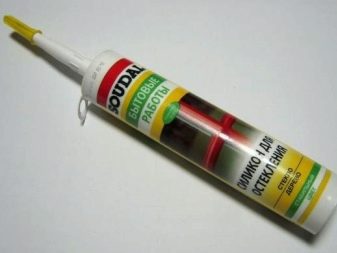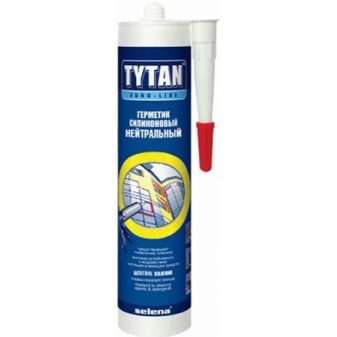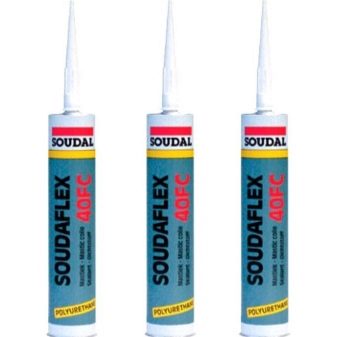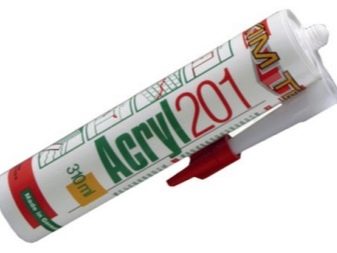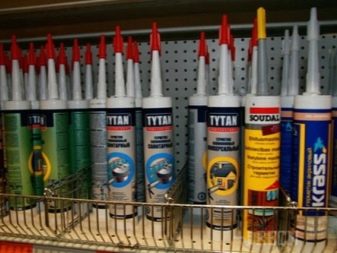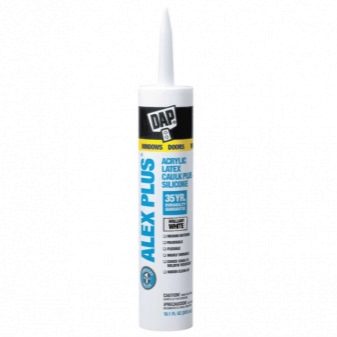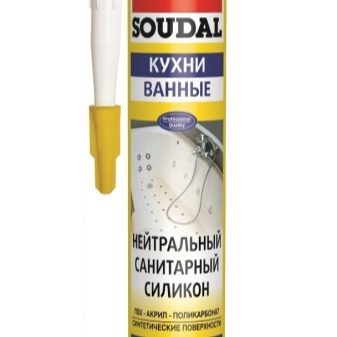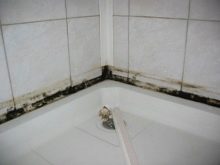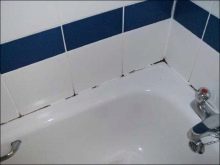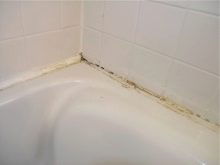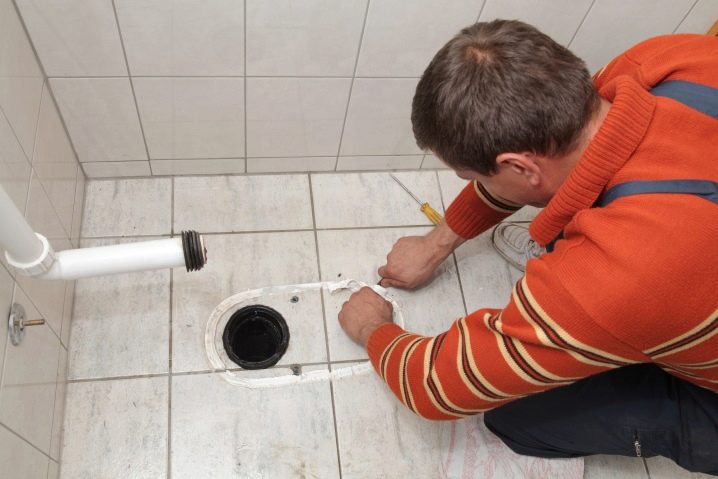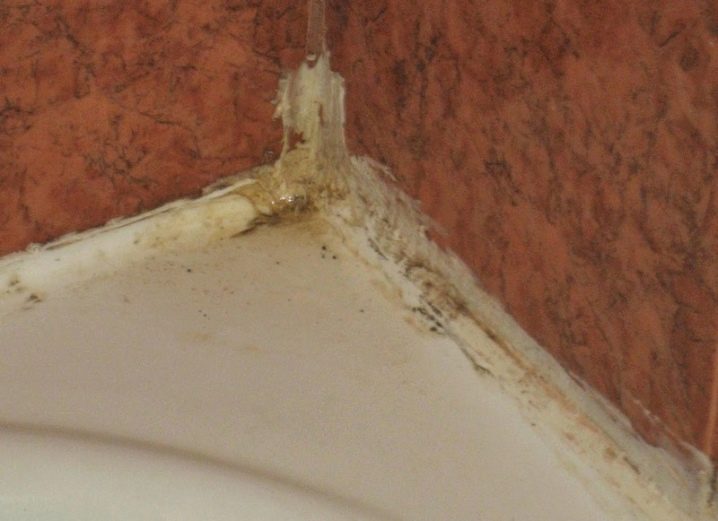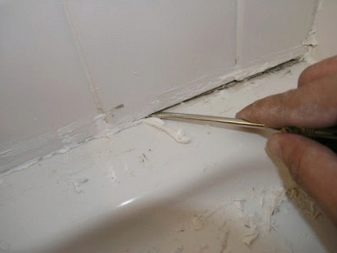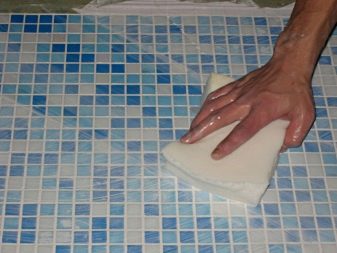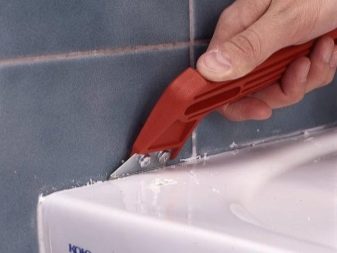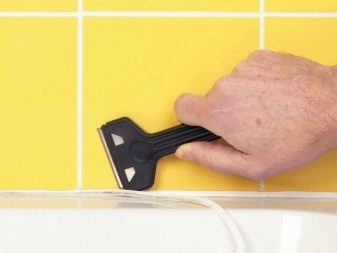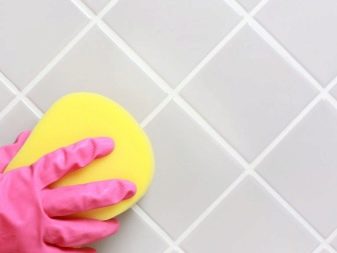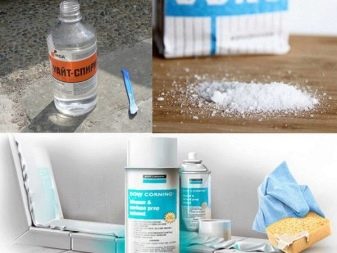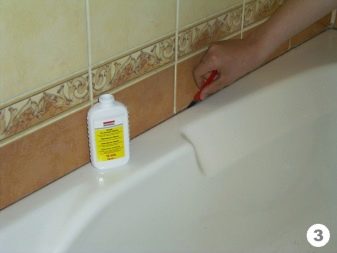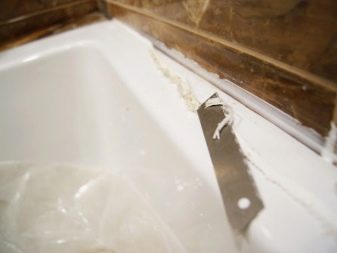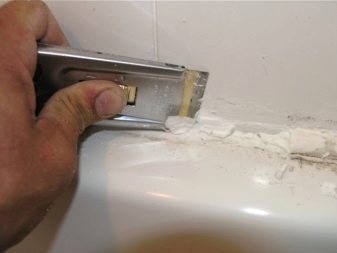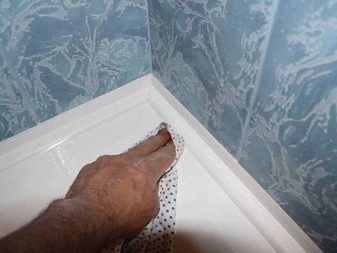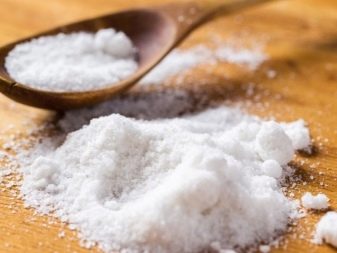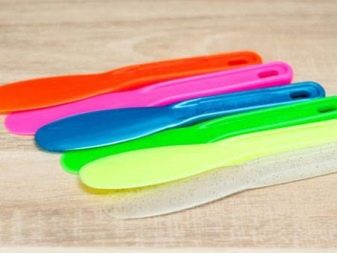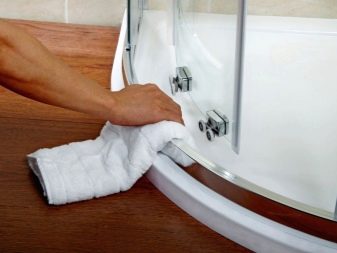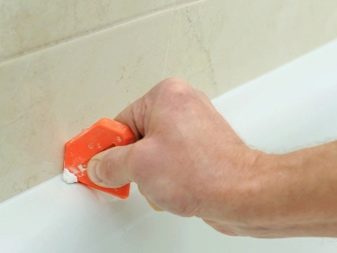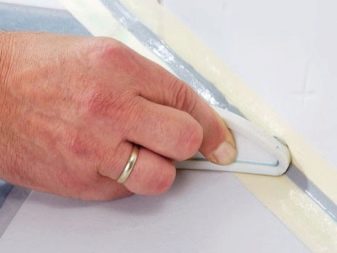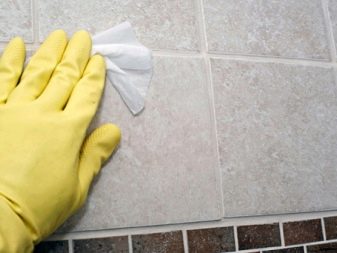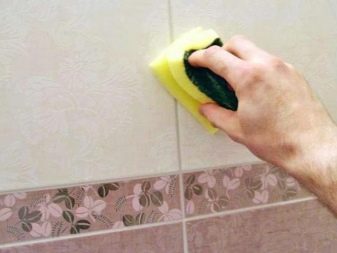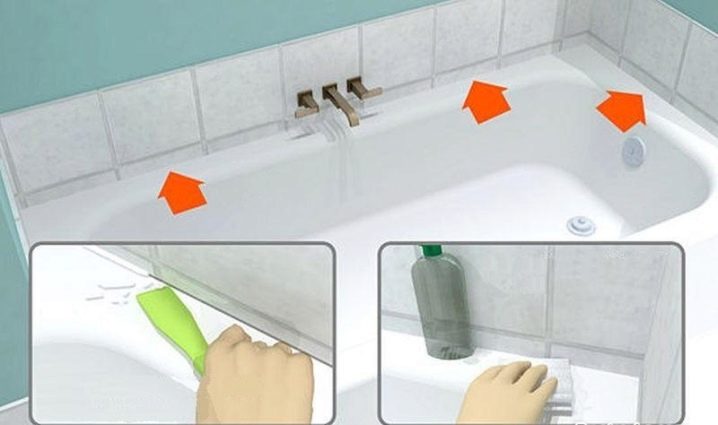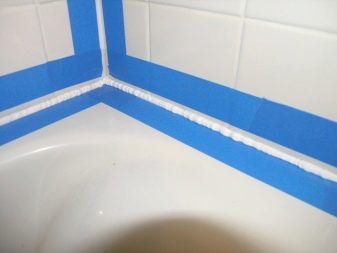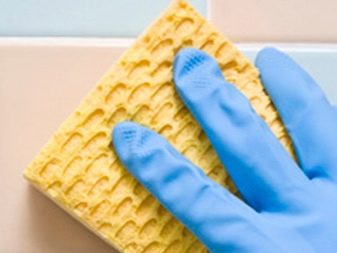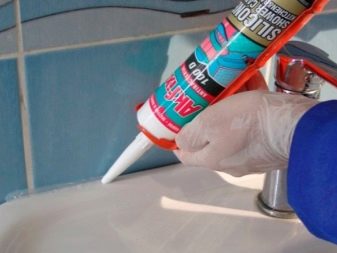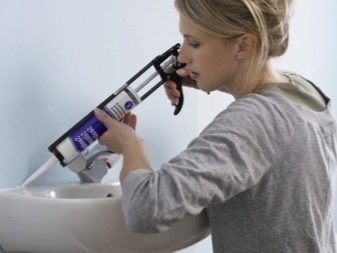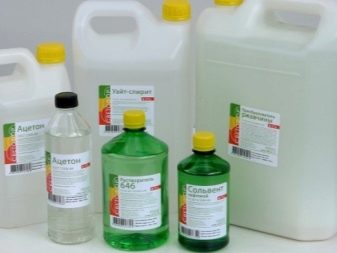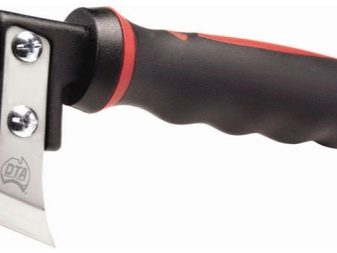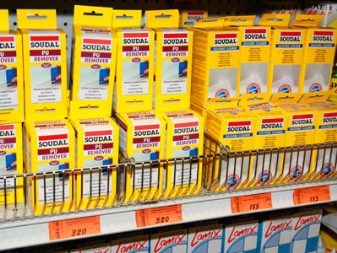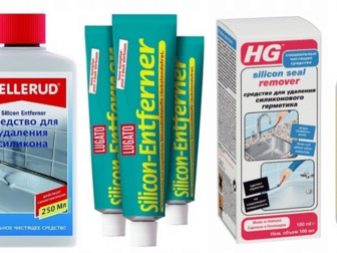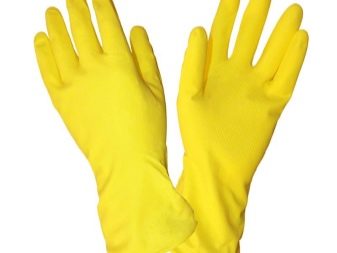How to remove the old sealant in the bathroom?
Sealing mixes are used in the bathroom for grouting tiles and various plumbing products. Over time, such a coating loses its original appearance due to all sorts of pollution or fungal formations. Since the material has high adhesion and resistance to chemicals, removing it from the surface for subsequent replacement is very problematic. This article will discuss how to remove the old sealant in the bathroom.
Types of sealant
The process of dismantling the sealing material will largely depend on its composition. Bathrooms are used substances with antiseptic additives, which have high moisture resistance.
In rooms with high humidity, the following types of sealing means are mainly used:
- silicone based;
- polyurethane;
- acrylic based;
- silicone-acrylic.
Silicone-containing
Silicone sealants are the most common type of material used in the bathroom. This coating has excellent moisture repellency. The composition of many silicone-based mixtures includes fungicides, which prevents the formation of fungus and mold on the surface. The material is characterized by excellent adhesion, resistance to temperature changes in a wide range and durability.
Means from silicone has one more name - sanitary sealant. The material received such a name due to its good resistance to chemicals. Note that the cost of silicone formulations is quite high, which, in turn, does not make such material less popular.
Based on polyurethane
This version of the sealant after drying forms a high-strength and at the same time elastic coating. The material is resistant to low temperatures. However, exposure to heat adversely affects the coating.
Polyurethane sealant can be used to finish vertical surfaces., as the mixture keeps well and does not flow down during the application process.The single-component composition does not contain toxic substances, which makes it safe for human health. Paint coatings can be applied to the polyurethane coating to improve the appearance of the material or its technical characteristics.
Acrylic
The composition on the acrylic basis in many respects is not inferior to silicone mixtures. The service life of the acrylic coating is also great and the level of adhesion is not lower. In addition, the material is cheaper than silicone compounds.
The disadvantage of mixtures with acrylic components is their low plasticity.Therefore, such a sealant can be used only in areas that will not deform over time. Otherwise, cracks may appear on the surface when the material dries.
The composition of acrylic blends does not contain organic solvents, which indicates the environmental friendliness of the material and the absence of odor. For bathrooms, only waterproof versions of acrylic sealants are used.
Silicone Acrylic
These mixtures combine all the best qualities of both types of sealant. The covering from such material turns out high-strength, elastic and durable.The mixture can be used as an adhesive for fastening various products.
When is removal required?
The use of sealant in the bathroom due to the peculiarities of the temperature and humidity conditions of the room. All gaps, gaps and seams on surfaces must be sealed to protect against water and moisture, as well as to prevent fungal growths.
After carrying out repairs or as a result of prolonged use of the hermetic coating, in certain cases it becomes necessary to remove the old layer of material for its subsequent replacement.
Consider the most common cases when it is required to remove from the surface.
- When carrying out repairs, it is possible to inaccurately apply a sealing mixture. If the solution is applied incorrectly, then in order to correct this error, it is necessary to thoroughly clean the old layer and fill the seam anew with a sealant.
- Any kind of sealing coating eventually wears out and deteriorates. It may change shade due to severe contamination or burnout. Cracks appear on the surface of the material, and the performance of the coating will become much worse.In this case, the old layer of the mixture should be immediately removed.
- Even if fungicides or other antiseptic components were part of the solution, during long-term operation in an unfavorable environment, a fungus or mold can appear on the surface. With the appearance and active spread of microorganisms, the material must also be replaced. Work should be done as soon as possible, because the fungus spreads very quickly in high humidity and sometimes causes great harm to the health of the household.
- During the repair process, the sealing mixture appears on those surfaces that were not intended for processing.
Stripping methods
All methods of removing the old layer of sealant at home are divided into two main types: mechanical and using chemicals. The complete stripping procedure can be called a combined method, since it involves the consistent application of both methods.
To clean the bulk of the material, it is recommended to use the method of mechanical action. The remains of the mixture or small pollution from the solution on the plumbing,walls and floors can be removed using special chemicals. It is quite simple to clean off fresh traces from not hardened sealant. It is enough to wipe the contaminated area with a cloth soaked in gasoline, any solvent or alcohol.
Mechanical
The mechanical method of removing the sealant is characterized by cutting and removing the old layer of material with pointed tools. Most often, only the upper part is physically cleaned, and the remnants are removed by chemical means.
The following tools are mainly used for the mechanical stripping method:
- metal spatula;
- construction scraper;
- stationery knife;
- screwdriver;
- kitchen knife with a thin blade.
It is not always possible to completely clean the surface with sharp tools. In many cases it is better to combine mechanical and chemical removal methods. Even if it was possible to free the seams from the old material as much as possible, then fat traces often remain in its place. Before applying a new layer such stains must be removed.
The following devices are used for stripping:
- pumice;
- abrasives;
- sandpaper;
- special cleaning products.
Cleaning the old layer of the sealing mixture mechanically is not suitable for all types of surfaces. When working with acrylic baths can not use metal knives, scrapers, spatulas and other items that may scratch the coating.
Chemical
For stripping old silicone, many modern manufacturers of building materials produce special chemical mixtures. Such compositions are able to soften the sealant, which allows you to effortlessly remove the old layer using any convenient tool. In addition to special solutions, you can use such familiar means as gasoline or white spirit.
How to scrub from the bath?
The method of removing the sealing agent depends on the type of mixture previously used, as well as on the surface material of the sanitary equipment. The mechanical method of cleaning is only suitable for enameled tanks made of cast iron or steel.
The procedure for removing the old layer of silicone coating in this case includes a series of sequential steps.
- The upper layer of the sealing substance is removed with sharp tools.This may be a knife, blade, screwdriver or any other convenient device. Cleaning should be done slowly and carefully, as it is likely to cut or scratch the bath.
- The remains of the material are cleaned with a piece of pumice, sandpaper or scraper.
- Even if it turned out to completely clean the old sealant from the seams, pollution will still remain in its place in the form of greasy traces. Such stains are cleaned using powdered household chemicals, after which the surface is well washed with clean water.
- Instead of household chemicals, you can use regular table salt to clean grease stains. It is necessary to sprinkle a rag or sponge with fine salt, sprinkle lightly with water and wipe traces of sealant on the surface in a circular motion.
To remove the sealant from an acrylic bath, it is better to use special means in order not to damage the coating of the product.
It is necessary to apply a special compound to the old layer of material and leave it for a while to affect the sealant, the exact interval will be indicated on the package. Most often, the solution is kept on the coating during the day.
The softened material can be removed with wooden blades. Remove traces of sealant and degrease the surface with vodka or alcohol diluted with water.
How to wash off the tile?
Both mechanical and chemical methods can be used for stripping tile seams. The first will not differ from a similar method of removing the sealant from the bathroom. Old silicone sealant is extremely durable; therefore, solvents are often used to remove it.
The process of cleaning the surface is quite simple.
- Using sharp tools, the outer layer of material is removed.
- Sponge or cloth on the seams with the remnants of the sealant must be applied gasoline, White spirit or any organic solvent.
- The applied agent is left in the seams for several hours. Over time, the sealant softens and becomes jelly-like.
- The material is removed using any convenient tool.
- Grease stains can be removed using household chemicals, salt or soda.
- Clean the surface again with soapy water or dishwashing detergent. After that, the seams need to rinse with hot water.
How to put a new layer?
Before you apply a new layer of sealing mixture, you must ensure that the seams are well cleaned. On them should not remain not only pieces from the old material, but fat traces.
If the previous sealant layer was covered with mold and fungus, then additional surface treatment is required, since traces of the microorganism may remain on the seams themselves. In this case, after the new sealing on the coating mold will reappear. Sewing can be done with vinegar. This tool will remove the remains of the fungus from the surface and reduce the likelihood of re-infection.
After carrying out all the procedures for cleaning the seams, you can proceed to re-sealing.
For the work will require the following devices:
- gun for applying sealant;
- masking tape;
- hair dryer or hair dryer;
- clean rag.
Before applying the sealant to the cleaned surface, you must make sure that there is no moisture left on the seams. Wet areas can be dried using a hair dryer. To protect a tile or plumbing fixture from accidental ingress of a sealing agent,Seams and adjacent surfaces must be glued with masking tape.
Sealing mixtures are mainly produced in a special tube., which is inserted into the construction gun for the application of such material. On the front of the tube there is a slight elongation in the form of a spout that needs to be trimmed. Then the sealant is placed in the gun, which can fill the seams.
Excess sealant on the surface of the joints can be removed with a finger dipped in water. To do this, it is enough to hold them along the seam, thereby smoothing the sealing material.
Useful tips from the pros
The mechanical and chemical method of stripping sealing materials have their own characteristics.
To wash the sealant with special means, you need to follow some simple rules.
- Before proceeding to the removal of the sealant using special tools, it is recommended to test the chemical composition in an inconspicuous area of the surface being cleaned. In this way, it will be possible to check whether the product and the surface material are not chemically reacted, and to avoid the appearance of stains on the product.
- Household chemicals effectively help to cope with pollutionfrom the old sealing compound. When working with such substances should be aware of the measures of their own safety. The skin of the hands must be protected by gloves. If solutions are used in the form of aerosol cans, the work should be carried out in construction glasses and a respirator.
Silicone sealant can be removed without the use of chemicals. Such material is well softened under the influence of high temperatures.
With the help of a building hair dryer, the surface is heated to four hundred degrees Celsius, then the old layer is easily cleaned.
How to remove silicone sealant in the bathroom, see the following video.
